-
Posts
8,579 -
Joined
-
Last visited
Content Type
Profiles
Forums
Gallery
Events
Posts posted by ccoyle
-
-
V108 will be built on a skeleton consisting of a set of formers, much like any wood kit. These formers will be made by laminating the printed former parts to a piece of 1 mm card; all the parts that need laminating are indicated by an asterisk on the parts sheets. There are different types of thick card available. The piece you see in the photo is the typical chipboard used for backing glued-up pads of paper. It is also possible to laminate multiple sheets of regular card stock until the desired thickness is achieved; this sort of laminated card is easier on #11 blades than chipboard.
It doesn't hurt to check that the parts, as printed, are in fact supposed to be 1 mm thick. In this photo, I've checked the locator lines on the hull base plate to verify that yes, the longitudinal profile former should be 1 mm thick.
And here I've checked the thickness of the parts sheet and chipboard together. They come in at very slightly under 1 mm, which is good, because the spray adhesive will add a little to the thickness.
Next, give the parts sheets (four all together) a couple of light coats of matte clear spray varnish. This will give the parts sheets a little bit of added stiffness and also protect the parts (somewhat) against accidental spills.
When the sheets have dried thoroughly, it will be time to laminate the parts that need to be 1 mm thick. You'll have to separate the 1 mm parts from the other parts on the sheets. Follow the directions on the can of 3M 77 spray adhesive and glue the parts to the chipboard or other card stock. You may find that the glued-up sheets want to curl a bit. You can offset this by stacking some heavy books on the flat sheets and letting them sit overnight.
At this point, you'll notice that the parts sheets include the necessary pieces for building the hull below the waterline. I'll be building the model as a waterline model. Card model hulls below the waterline are very difficult to get right, so since they may be a first model for you, I'm opting to eliminate the hassle.
Next, it will be time for cutting and gluing!
Back to Part IV: Tools & Other Supplies
-
And now the part you've been waiting for: What are we going to build?? Answer: We will build the 1/200 scale V108 torpedo boat from Digital Navy. Some reasons for this model: First, I have it printed already, and my printer has shown a recent propensity for not wanting to print on card stock, so finding a different model was problematic. Second, I have never built it before, which means that I'll have more motivation to build it, plus you and I will encounter the inherent construction problems together at the same time (all card models, no matter how top-shelf they are, have some construction problems; overcoming these is part of the challenge of card models). Third, it is a reasonably-sized model - not too big, not too small, and not overly difficult (based on parts count). Fourth, it is a torpedo boat, and torpedo boats are cool - who wouldn't want one?
The first thing you will need to do is acquire the model. Roman at Digital Navy has been kind enough to allow MSW to host the files here. Be sure to visit his web site - perhaps send a note of thanks and maybe even spend a few dollars! Each of the four pages comes in the form of a PDF. Download the files to your computer.
Page one is a cover sheet.
Page two is construction diagrams. Construction diagrams are very important for card models, since most card models are printed in non-English-speaking countries; therefore, the translation of instructions (if there is any) can be a little tortured - just like those infamous Italian-to-English instructions in many wood kits. So, diagrams are the chief construction guide for card models, and their number, completeness, and clarity can make or break a build.
Pages three and four are parts sheets. Two sheets is a small number for a card model.
Depending on your printer, you can try printing the model at normal resolution, or at 'best quality' for better color density. You may also need to tell your printer that you are printing on card stock. You can print the first two pages (cover sheet and diagrams) on 20 lb bond paper (regular printer paper). The pages are formatted in 26 cm x 19 cm, so they should fit on both 8.5 x 11 and A4. You'll want to print the parts pages on 20 lb bond as well - some parts will be easier to form on the thinner paper. The parts sheets also need to be printed on card stock (after all, it's a "card model"). Finding card stock can be intimidating, because it comes in different thicknesses and is measured differently in the US than elsewhere. The easiest way to get some is to go to your local stationery store and ask for "card stock" - chances are, whatever they direct you to will do the job.
Once you have the model printed, it will be time to prep the parts.
-
On the subject of copied commercial kits, do you have any advice on how to spot these so that we can avoid them?
First of all, never download a model from a third party file sharing site. Always download models from the designer's own web site or a site authorized to host them. Second, never buy CD's claiming to have "hundreds of models" from auction sites like eBay -- these are inevitably scans of commercial kits. If you shop at eBay or somewhere similar on-line, make sure the seller displays a photo of the printed kit booklet; it should have an artwork cover with the publisher's name plainly visible.
-
The tools needed to get started in card modeling are ridiculously few. Basically, you need a cutting tool and some glue. Everything else is optional.
Here's some basic tools:
You'll need a self-healing cutting mat, available from most office supply or crafts stores. Next, you need something to cut with. Notice the lack of scissors in the picture. Most card modelers rarely use them. Instead, your garden-variety craft knife will do the job nicely and with more precision. Get a good supply of #11 blades -- card can be surprisingly hard on them. A steel rule is a must, not just for measuring, but more importantly for cutting straight lines.
Glue is, of course, essential. A variety of glues will do the job, and each has merits and drawbacks. Good ol' PVA glue, either white (such as Elmer's) or yellow (wood glue -- hey, paper is wood, you know) are good general purpose glues with one proviso: it must be remembered that PVA glues are water-based, and card or paper will absorb the glue and deform. Thus, PVA is not good for gluing large surfaces together.
Cyanoacrylate glue, or CA (commonly known as 'Super Glue', which is a brand name), has its uses in card modeling. Fast-cure CA can be wicked into card stock to stiffen it, and medium-cure CA is useful for gluing parts made of different media together, as well as for paper-to-paper bonds.
Contact cement (not to be confused with rubber cement) is a non-water-based glue and thus good for gluing large surfaces together where severe warping would occur with a PVA glue. Contact cement sets rapidly, so repositioning of parts once they come in contact with each other is iffy at best.
Modelers in Europe have access to UHU-brand glues that some modelers swear by. I haven't come across any myself, so I haven't had a chance to try them out. Polish modelers, who seem to be born with a master card modeler gene in their DNA, use something called 'butapren'; I'm not a chemist, so I'm not familiar with what exactly butapren glue is, and it doesn't seem to be easily available in the US, possibly because it is a favorite of glue sniffers. Perhaps someone with knowledge of this substance can fill us in.
Now, on to some optional stuff that you'll probably want to have on hand:
From left to right we have:
- blackened, annealed wire - an assortment of diameters is useful for making gun barrels, railings, etc.
- styrene rod - card can be rolled into tubes, but for tiny tubes, styrene is often a better choice
- assorted paint brushes - for painting, but also for aids in rolling tubes
- tweezers
- paint, marking pens, or other media for coloring cut edges (more on this later)
- calipers - for measuring card stock thickness, especially when laminating sheets together
- hobby pliers (not pictured) - for cutting and forming wire (end nippers, needle nose, round nose)
Some other useful items to have are thin, flexible, clear acetate sheets (for glazing windows), matte clear spray varnish (for prepping parts sheets), and 3M spray adhesive (for laminating card and/or paper sheets together). 3M costs more than other brands, but take my advice, it's worth the money. Cheaper brands don't coat as evenly and produce clumpier spray patterns. Trust me -- I learned this the hard way.
I'm sure there's some other stuff I forgot to list, but I'll add those if and when I remember them. Now, go get your supplies, and we'll move on to the model!
Back to Part III: Shopping for Card Models On to Part V: Building V108 - The Hull
-
UPDATED 12/2022
The tutorial I will be writing will use a free kit as its subject, but supposing you wished to buy a paper model kit, where could you get one, and who makes the best kits?
The first question is rather easier to answer than the second, so we'll start by discussing the various publishing houses. Few card model designers run their own publishing outfit; usually the designers farm their kits out to one or more publishing houses. This makes it a little difficult to generalize about Publisher A versus Publisher B, because a designer might have his or her design published at both places. Lesson: It pays to take note of who designed a particular kit you like, then look for that designer's work at different sites. Something else to make note of is the date of publication. CAD designing did not become commonplace until about the turn of the new century -- the earlier a kit is published prior to 2000, the more likely it is to be hand-drawn. This is not to say that all hand-drawn kits are bad (they aren't) or that CAD-drawn kits are always preferable (they aren't either), but CAD-drawn kits usually have more and finer detail.
With that in mind, let's take a look at some of the major publishing firms. This is by no means an exhaustive list, because due to the nature of the product and the fact that it can easily be electronically distributed, there are dozens of Mom and Pop sites that may have a limited offering available. Here's a few of the better-known outfits:
WAK: This is currently my favorite Polish publisher and shop, as they have the best shipping rates to the US.
GPM: GPM are one of the largest card model publishers in Poland. They have a large selection of ship models in many scales, both in their own line and from many other publishers as well. They also have an extensive inventory of after-market accessories. Ordering by mail from Poland is usually not terribly expensive. GPM's listed postage rates are steep, but according to reports from other modelers, GPM will calculate the actual postage charge and refund the difference between that and the rate calculated at their website.
Modelik: Modelik carries only their own line of models, but as discussed previously, these are not all the work of one designer. Modelik kits are generally well-regarded in the hobby. Modelik charges a flat shipping rate of 15 EUR per order.
JSC: JSC have an extensive line of ship models and are one of the few Polish publishers to offer a large selection of models in a scale other than the usual 1/200 favored in that country; JSC kits are normally either 1/250 or 1/400. Many of JSC's kits are older hand-drawn designs. JSC sells directly to the public and through other on-line retailers.
Kartonowy Arsenal (KA): Better known by the surname of its owner and chief designer, Halinski, KA offer highly detailed models of mostly WWII warships. Though often considered suited only for advanced modelers, the fact that they usually fit together so well eliminates some of the problems found in less well designed kits. KA does not sell directly to the public. (EDIT (2022): KA does now sell directly from their site, although the ordering process is not what you might expect. You send an email specifying the products you wish to order, and then KA sends you a quote.)
Orel: This Ukrainian publisher is relatively new to the scene, but they have been prolific. They offer a large selection of mainly Czarist-era Russian vessels, including torpedo boats, destroyers, cruisers, and pre-Dreadnoughts in 1/200 scale. Orel sells directly to the public as well as through larger firms like GPM. (UPDATE (Dec. 2022): Due to the current hostilities in Ukraine, Orel is not currently accepting orders.)
HMV: The Hamburger Modellbaubogen Verlag is probably the premier German ship model publishing house. Like other German publishers, their kits come in the 1/250 scale preferred in Germany. They have a wide selection of mostly German warships, passenger ships, and merchantmen. They also offer an extensive line of after-market detail sets. HMV have been good about upgrading their designs, and several of their older hand-drawn models are currently being reworked as CAD models. HMV does not sell directly to the public from their website.
Moewe Verlag: Also known as Wilhelmshavener, this publisher has an extensive line of warships, passenger ships, and merchantmen in 1/250. Ordering from them can be kind of tricky, since many of their kits are hand-drawn models dating as far back as the 1960’s, and this isn’t always obvious when browsing their website. MV kits tend to be less detailed than HMV kits, but they have a broader selection and somewhat lower prices. They don’t offer after-market detail sets. Moewe kits can be purchased on-line from their website.
J F Schreiber: Schreiber are the third major German publisher. Their kits are, as a rule, less detailed than either HMV or Moewe, but they offer more kits of simpler subjects suited to beginning modelers. They also offer more kits in 1/100 scale than other publishers. Schreiber operates an on-line store.
Paper Shipwright: Designer David Hathaway’s line of kits is unique in its extensive offering of monitors. David also designs small passenger craft and working vessels. These are generally very good kits and also reasonably priced, with a fair but not overwhelming amount of detail. Paper Shipwright kits can be ordered directly from their website.
Shipyard: The premier publisher of card model sailing subjects. Shipyard kits are distributed in the US by Ages of Sail.
In addition to the aforementioned publishers, many excellent designs are available from smaller outfits, some notable ones of which include Digital Navy and Answer (perhaps not exactly 'small outfits', but their ship model selections are limited). As noted, some of these publishers sell directly to the public, and some don’t. Finding a retailer that carries the kits you want can sometimes be a taxing ordeal, but here are some of the more popular sites:
GPM, Orlik, and Model-Hobby are three of the larger Polish retailers, each carrying their own in-house models as well as designs from other firms.
Karton Modell Shop is a German retailer with a good selection from a variety of designers.
Marcle Models are one of the larger distributors in the UK.
Paper Model Store is practically the only US retailer with a broad selection of Polish kits. None from Germany, though. (UPDATE: The PMS website has been inactive for years now, and the seller appears to selling on eBay these days.)
E-Cardmodels is a retail venue for a slew of small designers -- a lot of variety of subjects, scales, and degree of difficulty.
HMV are sold through Fentens Paper Models. As of December, 2022, HMV is looking for a new US distributor.
There are many, many other places to buy kits on-line, but these should get you started. Have fun browsing!
Back to Part II: Start for FREE! On to Pt. IV: Tools & Other Supplies
- Stevinne, BenD, thibaultron and 4 others
-
 7
7
-
The short answer to that question is "yes"! Gun barrels can be rolled from paper, scratch-built from other media, or in some cases purchased as after-market accessories in the form of turned brass or aluminum barrels. Generic fittings such as railings and ladders are available as laser-cut or PE sets, and kit-specific detail sets are also available, usually including fiddly bits such as small armament, davits, and such.
-
1/250 seems to be the most common scale in Germany, the UK, and the US, while 1/200 is the usual scale in Eastern Europe. 1/400 and 1/350 are also not unusual (JSC has a substantial line of 1/400 kits), and 1/100 is common for smaller vessels. Some card modelers prefer to work in a single scale and will scale kits up or down with a scanner (anyone wishing to do this, though, should keep in mind that scanning a model and then selling the original is tantamount to piracy).
-
How would you like to have had the opportunity to build your first wooden or plastic model ship having spent nothing for the kit and knowing that you will have as many chances as you need to get it right without ever having to purchase the kit over again? Uh-huh -- good luck with that! But one of the beauties of card modeling is that you can do exactly that -- build your first model for free. Or at least pretty close to free.
Many card model designers and/or publishers offer one or more free model kits. These come in the form of a downloadable file, usually in PDF format. You simply download the file, print out the kit on your printer using appropriate card stock, and you're off to the races! So, technically the kit isn't completely free, since you have to buy the paper and supply the printer and ink, but you get the idea.
One thing to keep in mind when considering a downloadable model is that almost all designs from anywhere other than the U.S. are designed to be printed on A4 size paper. Occasionally designers will make their designs optionally available in 8.5" by 11" format, but this is the exception rather than the rule. U.S. modelers will need to scale their models to fit 8.5" by 11", or else print the full-size pages in multiple pieces, which wastes some paper and ink on redundant parts.
The nice thing about a free model is that if you ruin it during construction, you're not out of a lot of money, plus you can simply reprint one or more pages and you're back in action.
A WORD OF CAUTION!! Many unscrupulous persons scan commercially available card model kits and then host them at third party file sharing sites -- these are not 'free models'. They've been stolen. DO NOT PATRONIZE SUCH SITES! Not only are models obtained from such sites pirated and thus not welcome at MSW, but designing card models isn't exactly a lucrative business. Buying card models from legitimate sources helps out our designer friends, who are very often fellow modelers as well as designers.
OK, so where can you download some free models? Here are some sites to check out:
Models 'n' Moore: This site offers a number of designs by the late Magnus Morck, mostly American Civil War gunboats.
Digital Navy: The Admirable-class minesweeper has introduced many card modelers to the hobby. A lightship, torpedo boat, and 1/700 scale HMS Dreadnought are also available. Don't try 1/700 scale as a first card model, unless you are a masochist.
Paper Shipwright: Several free models, of which the most detailed is the river monitor SMS Rhein.
Zioprudenzio: Mostly Italian naval vessels in 1/400 and 1/200 scale. Some of the smaller 1/200 models might be a first good project (no experience with them myself). (EDIT: Zio Prudenziati passed away in 2014, and the link to his old site no longer works. I have been unable to find his models hosted elsewhere.)
There's others, but these are some of the most commonly used resources. Give them a visit!
Back to Part I: What is a card model? On to Part III: Shopping for Card Models
- Rik Thistle, BenD and ianmajor
-
 3
3
-
So what exactly is a “card model”? A card model (more properly a paper model, since card is only one of many kinds of paper, though the terms card and paper are frequently used interchangeably) is simply a model made primarily out of paper. Many modelers are surprised when they hear for the first time that a ship model can be made from humble paper, but paper as a modeling medium has a long history dating back to the early 20th century. During World War II, paper was one of the few resources not heavily regulated due to the war effort, and paper models enjoyed a brief peak in popularity, even in America. After the war, though, plastic model kits began to take over the market, and paper model kits eventually become so scarce that most modelers have never heard of them, except in the countries that formerly made up the East Bloc. Communism may not have had much going for it as a system of government, but what it did do is preserve card modeling as an art form. Because plastic models were prohibitively expensive in Eastern Europe, card modeling remained a popular hobby there. Once the Cold War thawed, commerce started flowing between East and West, and one item in particular had a huge influence on card modeling: CAD technology. Our card modeling friends in Eastern Europe were quick to apply computer-aided drafting to the art of designing card models, and as a result an ever-increasing number of card model designs became available with better artwork, more detail, and closer fit tolerances. Although the number of Western designs is also increasing, for the most part the hobby is still dominated by designers and publishers from the East, particularly Poland, home to some of the preeminent publishing houses, including GPM, Modelik, JSC, Orlik, Maly Modelarz, and the company considered by many to be the gold standard of card modeling, Kartonowy Arsenal. Germany is another leading producer of card models, with HMV, Moewe-Verlag, and J. F. Schreiber being some of the better-known publishers.
Paper has a number of selling points as a modeling medium, probably the most important of which is that it is relatively cheap. With the prices of wooden and plastic kits exploding in recent years, the fact that most paper kits can still be purchased for under $20 US makes them attractive candidates for modelers with small budgets. Paper Shipwright of the UK, for example, offer 44 ship designs in their catalog, none of which has a price tag greater than $16 US. Of course, just like with wood or plastic, after-market additions can push the price of a card model project up considerably, but even with the cost of laser-cut or photo-etched details thrown in, a card model costing over $100 US is rare. In addition to being inexpensive, paper is also versatile, and with careful manipulation can be molded into almost any three-dimensional shape. A third advantage of card models is that they are, with very few exceptions, pre-colored, meaning that the color of the finished model is printed on the paper. Modern graphic design programs allow designers to produce card model kits with exceptionally realistic weathering already printed on the model. In most cases, painting or coloring of a card model is limited to the need to obscure the seams between adjacent parts. And finally, card models require very few tools to get started – most people probably already have the basic cutting and gluing supplies in their house somewhere.
One of the most compelling reasons to try card modeling is that a card model kit that starts as a set of flat, printed sheets can be transformed into a stunning finished product. There is a learning curve, of course, but hearing someone say, “I can’t believe that’s made out of paper!” upon viewing one of your finished card models never gets old.
An excellent one-stop site to see a variety of completed card ship models is the website for Hamburger Modellbaubogen Verlag, better known as HMV. Their site is available in both German and English. Enjoy!
Continue to Part II: Start for FREE!
-
Hi! I see the title of this thread has grabbed your attention. I admit I have a shameless reason for starting this series, and that is to raise the profile of card/paper as a modeling medium here at MSW. Over the years here and at MSW 1.0 a number of people have expressed an interest in trying their hand at a card model, and that's what I hope you will do after reading this series of posts. My goal is to describe the building of a simple card ship model in sufficient detail that upon reading it, anyone can say, "Gosh, I can do that!" And then, perhaps, you will actually go forth and do that!
 Today's installment, Part I, is a very brief description of card models. As subsequent parts are added, I will edit this post to keep the Table of Contents up-to-date. So, sit back, enjoy the series, and seriously consider taking a trip to the Dark Side of ship modeling!
Today's installment, Part I, is a very brief description of card models. As subsequent parts are added, I will edit this post to keep the Table of Contents up-to-date. So, sit back, enjoy the series, and seriously consider taking a trip to the Dark Side of ship modeling!TABLE OF CONTENTS
Part I: What is a card model?
Part II: Start for FREE!
Part III: Shopping for Card Models
Part IV: Tools & Other Supplies
Part V: Building V108 - The Hull
Part VI: Building V108 - The Superstructure
Part VII: Building V108 - Armament
Part VIII: Building V108 - Miscellaneous Bits
- BenD, Ray Durant and EricWilliamMarshall
-
 2
2
-
 1
1
-
I wasn't even aware they had this kit out. You should do an in-the-box review when it arrives.
-
That said, let's get this thread back on topic, shall we? If anyone wishes to further pursue the discussion of 3D printing in the hobby, please start up a new thread. Now, back to Chris and his updates!
- Brigg Fair, Kevin, Jaxboat and 1 other
-
 4
4
-
-
Very sorry to hear of your family's loss, Suzanne.
Kindest regards,
Chris
-
I built the Corel Flying Fish. The only kind thing I can say about it is that I finished it, albeit modified (see here). The fittings were deplorable -- a mishmash of off-the-shelf items that often bore little or no resemblance to any real-life structures. I get the sense that with Corel, you get what you pay for, i.e. more expensive kits are better products.
-
Adam, I think you got the essence of it correct when you spoke of the question of how much as opposed to what is required for a model. Planking techniques for a cutter are the same as for a ship-of-the-line, but the SOL has much more to do. Same thing for masting, rigging, guns, etc. Some of the skill levels mentioned on kit boxes are questionable, to say the least. Model Shipways' Kate Cory, for example, is described on the box as an ideal first model. Excuse me? Kate Cory is square-rigged, coppered, has a ton of deck furniture, and includes four fiddly little whaleboats. In my book, that's a challenge for any modeler, much less a beginner. To me, the main point is, does a kit include enough elements to make success likely, i.e. detailed instructions, low parts count, pre-cut or pre-formed components, minimal tricky elements and such. Based on those criteria, I have always held Midwest Products kits to be as near fool-proof as beginner's kits can be. Fortunately, we live in an age where even more complex models can be tackled by beginners thanks to some manufacturers paying more attention to comprehensive instructions, newer design techniques, and of course, access to info at sites such as MSW. But for anyone considering one of those newer designs, I would still advise along the lines of "less is more", as in "more likely to be completed".
Cheers,
Chris
-
Jason, the upgrade kit consists in large measure of bits that were included in the later Pegasus kit. There are a few minor differences between the two kits, one being the manner in which the quarterbadges are constructed, if I remember correctly. It may be some time before I have any updates -- the main reason I'm not building anything at the moment is that it turns out my wife is allergic to many of the paints and adhesives I use. Still working on a solution for this.

-
Belco et al,
The Black Pearl being Disney's intellectual property, any plans or kits of her must be properly licensed. Since the linked plans in a previous post were hosted at a Japanese-language site, MSW staff cannot assess the legitimacy of those plans, thus the link has been removed.
Kind regards,
Chris
-
Chris,
If you are looking for some more helpful instructions, you will not find them in that particular kit. Caldercraft instructions have grown more comprehensive over the years, but the Endeavour is one of their early releases. You could try one of their newer releases, such as Badger or Pickle. Model Shipway's Syren, designed by our own Chuck Passaro, also has very detailed instructions. On the other hand, interest in your subject goes a long way in overcoming difficulty, so if you have your heart set on Endeavour, the Caldercraft edition is probably the best offered, and there are resources available here to get you through the build, such as the planking tutorial in the Ship Modeler's Database.
Regards,
-
Chuck, if you enter "Fair American" in the search window, you will find four build logs currently in progress. Good luck with your model!
-
A kit from Russia, or a Russian kit? There are some legitimate Russian kit designs on the market. We had at least one posted on the old site, and it looked very nice. Also some nice kits coming out of Croatia as well.
-
-
I hope your son keeps up with the modeling. I tried to get my son to have a go at it, but it didn't take. We have other shared interests, just not ship building. Oh, well! Oh, and I loved building in 1/700 back in the day.
-
Robert, your model looks absolutely splendid! It makes a very strong argument in favor of something I wish kit manufacturers would do, namely offer packages that consist of only the hull former set. Your upgrades are a dramatic improvement on the basic kit, and as you said earlier in this thread, had you known about the existence of pre-milled wood, you would have used that for the entire hull. Seems like a simple enough proposition, doesn't it?
Cheers!



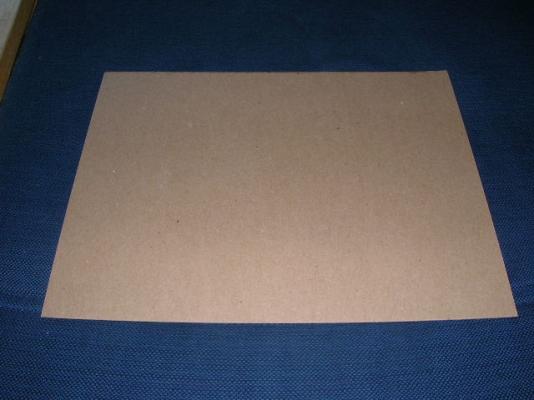
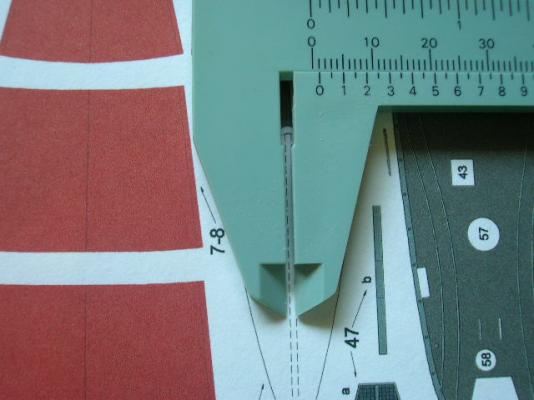
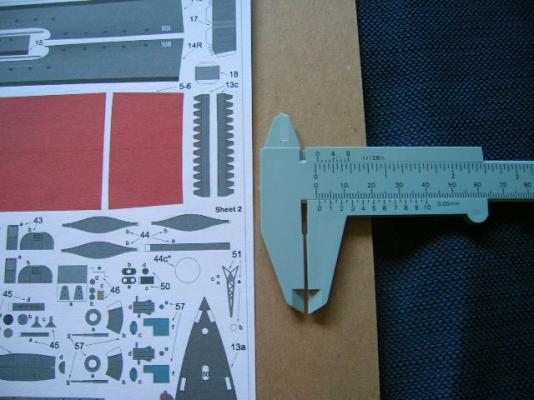
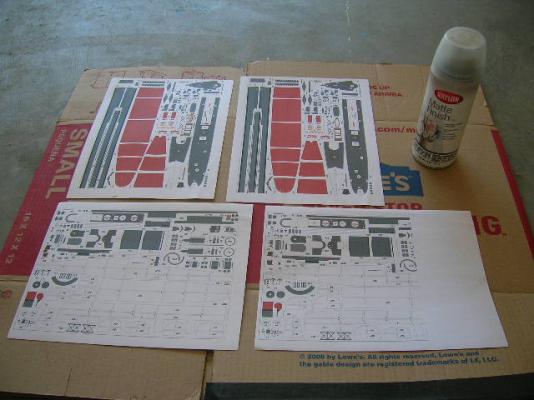
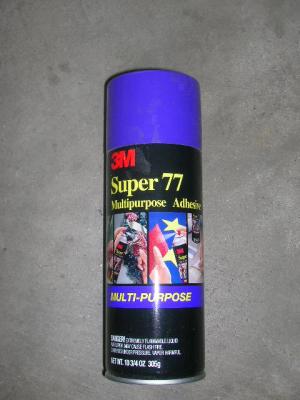
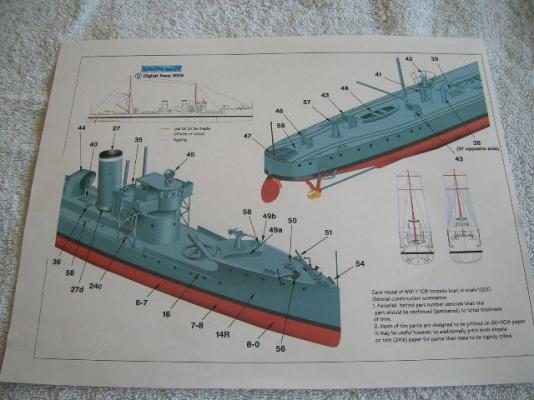
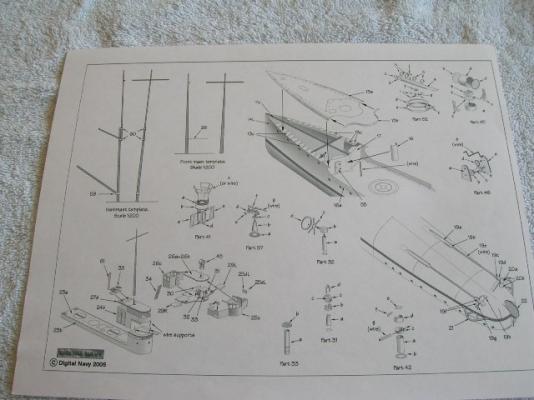
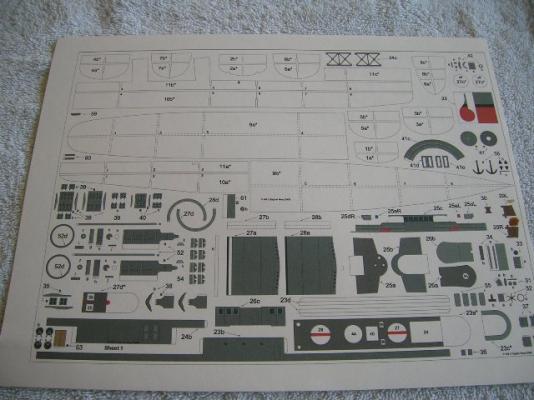
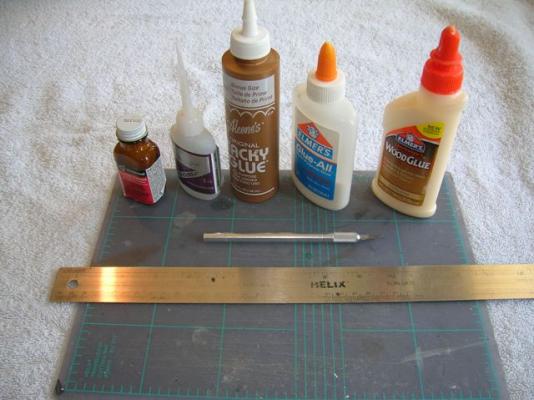

Pt. V: Building V108 - The Hull
in Card and Paper Models
Posted
Ah ah ah ... no head-starts!